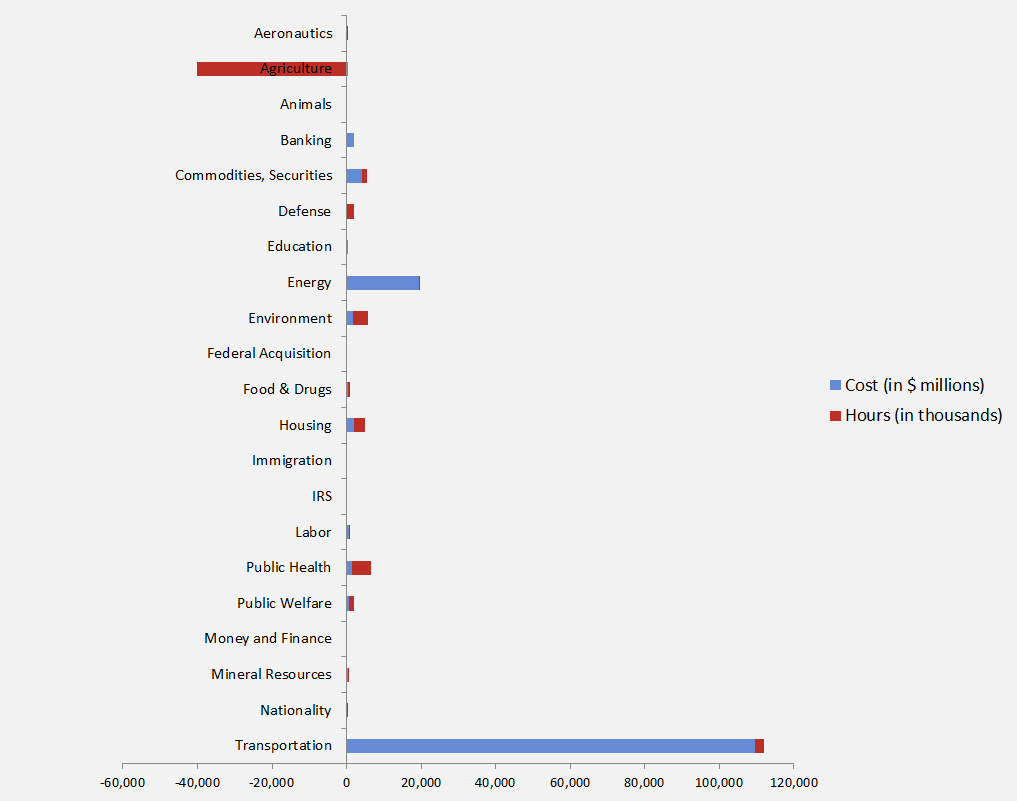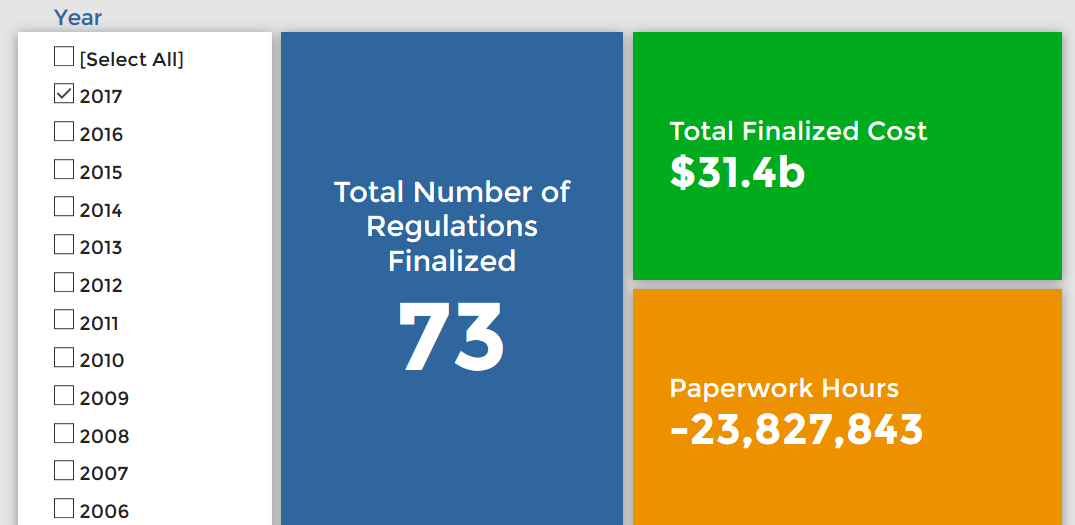Week in Regulation
April 10, 2017
The First “Out” in the Regulatory Budget
The nation has its first “out” under the administration’s one-in, two-out regulatory budget. This week, the Department of Labor (DOL) published a formal delay to its “Fiduciary” rule, which at $31.5 billion in costs, was the most expensive regulation in 2016. According to the agency, this delay produced regulatory savings, driving down regulatory costs this week by $107 million, or $67 million annually. Paperwork increases were trivial. The per capita regulatory burden for 2017 is $442.
Regulatory Toplines
- New Proposed Rules: 40
- New Final Rules: 63
- 2017 Total Pages of Regulation: 17,096
- 2017 Final Rules: $31.3 Billion
- 2017 Proposed Rules: $111.6 Billion
The American Action Forum (AAF) has catalogued regulations according to their codification in the Code of Federal Regulations (CFR). The CFR is organized into 50 titles, with each title corresponding to an industry or part of government. This snapshot will help to determine which sectors of the economy receive the highest number of regulatory actions.
The Consumer Product Safety Commission (CPSC) proposed safety standards for infant inclined sleep products. The proposal aims to reduce the 14 fatalities and 643 nonfatal incidents associated with inclined sleep products between 2005 and 2016. The proposed costs of the standards are modest: $84,000 and 2,550 paperwork hours.
Tracking Regulatory Modernization
Although not paired with another deregulatory action or a significant rule that increased costs, DOL essentially “banked” regulatory savings when it formally delayed its Fiduciary rule. Total long-term savings could eclipse $123 million, with $78 million in reduced burdens until January 1, 2018. This is the first significant final rule from the Trump Administration and it also reduces burdens, providing “savings” to DOL under the one-in, two-out system.
Below are the agencies that have accrued annual savings and are technically compliant with the president’s regulatory budget:
- Defense: $400 million
- Interior: $360 million
- Education: $100 million
- Labor: $78 million
- HHS: $0.02 million
All non-DOL figures are the result of CRA resolutions of disapproval. Given their historic regulatory output, AAF can predict that Defense, Interior, and Education will likely meet the goal of $0 in net regulatory costs by the end of this fiscal year.
For CRA resolutions, the House and Senate have both passed 13 CRA resolutions, with the Senate passing 13 total and the House 15 in all. President Trump is expected to sign all measures that reach his desk. Once signed, Congress and the administration will have eliminated $5.5 billion in total regulatory costs and 4.3 million paperwork burden hours. There are two additional House CRA approvals on which the Senate has not voted. To date, there have been more than 30 resolutions of disapproval introduced.
Affordable Care Act
Since passage, based on total lifetime costs of the regulations, the Affordable Care Act has imposed costs of $53 billion in final state and private-sector burdens and 176.9 million annual paperwork hours.
Dodd-Frank
Click here to view the total estimated revised costs from Dodd-Frank; since passage, the legislation has produced more than 74.8 million final paperwork burden hours and imposed $38.5 billion in direct compliance costs.
Total Burdens
Since January 1, the federal government has published $143 billion in compliance costs ($31.3 billion in final rules) and has cut 19.8 million paperwork burden hours (due to 23.8 million in reductions from final rules). Click below for the latest Reg Rodeo findings.












